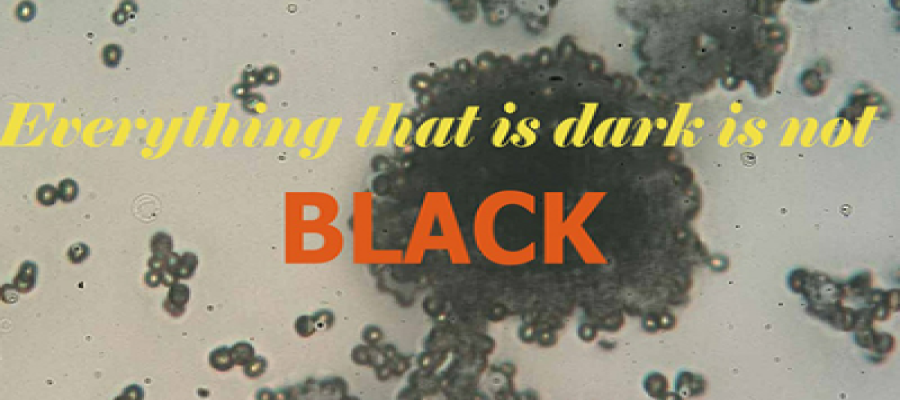Introduction
Plain
language is grammatically perfect, with an entire sentence structure and
precise word usage. Clear, to-the-point writing improves communication and
takes less time to read and comprehend. There is an increasing desire for
non-technical audiences to have access to current medical research in simple
language formats(1). Thus, to
communicate clinical research to a non-technical audience, best-practice approaches in the form of plain language summaries (PLSs) are necessary(2).
Clinical
trial results that are presented in simple, stand-alone factual summaries have
the potential to improve public awareness and participation in pharmaceutical
research (3). PLSs, in
particular, are intended to improve research participants' comprehension of
trial processes and outcomes to improve their overall clinical trial experience(4). According to
research spanning a variety of therapeutic indications, people who have taken
part in clinical trials want to know the outcomes as soon as possible.
Furthermore,
the PLS process could provide a significant opportunity for sponsors, contract
research organizations (CROs), and sites to express their gratitude to patients
for participating in their studies regularly, potentially increasing patients'
trust and confidence that the study sponsor will actively protect their privacy
and maintain the confidentiality of their data(5).
Policies and guidelines
A PLS is not simply a modified or
rephrased version of the paper abstract. There are few policies and guidelines specified,
to make scientific data accessible to the general public and develop their
knowledge about ongoing research and its outcomes. Some of the very basics are
as follows:
·
Be clear and concise.
·
Break documents into separate topics.
·
Use short paragraphs.
·
Use shortlists and bullets to organize
information.
·
Use more headings with fewer sub-headings.
Need for PLS in science
communication
u Simplifying science through PLS
Simplicity,
clarity, and transparency are the keys to communicating science effectively (1).PLS use
non-technical language to explain the motivation, methods, and findings of a
scientific investigation, allowing non-expert audiences to appropriately
comprehend scientific findings(6). Scientific
abstracts, on the other hand, are written for an audience of experts. Sharing a
PLS with study participants has been found to improve public desire to
participate in clinical trials.PLS has received endorsements from several
international working groups and professional organizations. Even though the
legislation has not yet been implemented, several sponsors have already begun
to produce these documentations. The motivation has been altruistic rather than
regulatory compliance.
u Disseminating clinical trial data
in PLS
The
dissemination of study data is essential for clinical trials to be completed,
and it is primarily intended to aid in the translation of evidence into policy
and practice(7). Other
academics and healthcare professionals, policymakers, funders, and the general
public are among the audiences to whom scientists convey their findings(8). The possible
advantages and burdens of research involvement must be considered at each stage
of the trial procedure to improve the trial experience. Clinical trial research
burdens entail psychological, physical, and financial consequences that occur
both during follow-up and after participation is completed(7),(8). Failure to
foresee or minimize the negative consequences of participation may have an
impact on future clinical research participation and the desire to give time to
longitudinal cohorts.
u PLS in improving health literacy
and vaccine awareness
Vaccines
have demonstrated their ability to prevent vaccine-preventable diseases from
causing illness, disability, and death(9). Vaccination
and immunization are supported by a large body of evidence, the most recent
examples being the COVID-19 vaccines. "The capacity of individuals to
obtain, process, and understand basic health information and services needed to
make appropriate health decisions" is defined as health literacy (10). It is a
comprehensive notion that refers to people's abilities to handle the
complicated demands of modern health(9). Plain language
summaries can be used to inform the general public either directly or
indirectly (via healthcare professionals) and may aid in the development of
trust and vaccine confidence(11), (12).
Recommendations
for plain language summaries for the following types of publications
u Peer-reviewed
medical journal publications
PLSs
of peer-reviewed medical journal papers are a way to share research with a wide
range of audiences, and they may promote medical research transparency,
accountability, accessibility, discoverability, and inclusion(13). There is
currently an industry-wide effort underway to establish consensus on plain
language summaries, and initiatives have already been put in place to provide
detailed guidance on plain language best practice, co-creation methods,
patient-focused content, graphic and digital considerations, and
publisher-specific guidelines(14). However, a
basic set of suggestions is still needed to supplement existing projects and
specify the minimal procedures required to provide PLSs that are trustworthy,
credible, and of high quality.
u Publications of company-sponsored
medical research
Lay
audiences are interested in medical advancements. Evidence supports the use of
PLS for effectively communicating research to these broader lay audiences and
demonstrates that PLS can improve understanding of research results(15). Understanding
the implications of new data can help patients and their healthcare teams put
research into context and can facilitate shared decision-making. Effective
communication via PLS may broaden the scope of medical research by assisting in
the avoidance of misunderstanding and misinterpretation of complex data, as
well as the combating of misinformation.
u Abstract plain language summary for
Scientific congress
Many
individuals are interested in learning about the most recent scientific
advancements in the field of medicine. Clinical data, on the other hand, is
often complex and difficult to comprehend if one is not a scientist. Developing
plain-language summaries for research results given at medical conferences to
enable interested non-scientists better comprehend the newest research. These
are referred to as "abstract plain language summaries" (APLS).
Benefits and challenges of PLSs
|
Benefits |
Challenges |
|
§ Allows
researchers to reach a broader audience. § Serves
as a tool for disseminating findings beyond a small group of scientists. § Helps
explain research findings in easy words that are understandable to people who
are not part of the scientific community. § Fewer
chances of misinterpretation. § Allows
for public participation which may improve the chances of research findings
being funded, a priority for research funding authorities. |
§ Regulations
prohibit pharma companies from communicating directly with patients. § Difficult
to maintain a balance between transparency and promotion. § Fear
of spread of misinformation when disclosing early clinical trial results to
patients. § Sometimes,
conveying technical terms in plain language is tough. § Lack
of robust and structured patient advocacy groups. |
Future of PLS: Prospects and
Perspectives
u Scope of improvement
Plain
language summaries (PLS) can spread medical knowledge to a wider audience and
combat health misinformation, which is a major issue highlighted by the
COVID-19 pandemic(11). Open Pharma
guidelines(13), a 'how-to'
guide for multi-stakeholder insights from Patient Focused Medicines
Development, and PLS of Publication (14), a new journal
article type from the Future Science Group, are examples of the recent breakthrough
in PLSs. Despite these advancements, PLS have been reluctant to gain traction
as supplements to medical papers, and there are no standardized methods for their
creation or dissemination.
u Key questions to address
The
following questions need to be addressed to ensure formulating a proper PLS(15):
1. What
information must, and must not, be included in a PLS?
2. Who
are the target audiences for PLSs, and why are they important?
3. What
format(s) for a PLS is/are the best?
4. What
is the best process to design, review, and approve a PLS?
5. What
must be done to guarantee that PLSs are regarded as proper vehicles for
accompanying scientific articles beyond medical education or promotional
materials?
6. To
achieve maximum reach and discoverability, where and how should PLSs be
published?
7. How
can the reach, quality, and value of PLSs be quantified?
8. To
avoid the sponsor's perception of selection bias, what approach should be used
to choose articles that will have a PLS?
9.
What requirements should be followed
while creating a PLS for a previously published article?
u Scope of PLS according to
geographical location
Assuming
that every PLS and relevantquery submitted to an information retrieval (IR)
system is geography-dependent is a significant concept(15). If the
geographical scope of an article can be determined, this information can be utilized
to improve the precision with which persons, places, and organizations named in
the article can be located(16). More
crucially, by tuning relevance ranking and query expansion algorithms using
scope metadata, geographical scopes of documents can be used to reach out to
readers against geography-dependent user queries.
Conclusion
PLSs
are meant to give readers a clear, nontechnical, and easily accessible overview
of medical and scientific literature; nevertheless, audience preferences for
specific PLS formats have yet to be completely studied. By optimizing content
and structure, the PLS can improve health literacy and, as a result, raise pharmaceutical
knowledge and confidence as part of a larger integrated communication strategy(11). An
industry-wide effort is underway to create consensus on PLSs. Even though the
legislation has not yet been implemented, several sponsors have already begun
to produce these documentations. The motivation behind simplifying science is
more altruistic rather than regulatory compliance.
References
1. Chari
D, Arnstein L, Passador L, Biegi T, Stones S, Matthews P, et al. Defining a
process for developing and disseminating abstract plain language summaries for
scientific congresses: A case study. 2020.
2. RUDD RE, KAPHINGST K, COLTON T, GREGOIRE
J, HYDE J. Rewriting Public Health Information in Plain Language. J Health
Commun. 2004 May 1;9(3):195–206.
3. Penlington M, Silverman H, Vasudevan A,
Pavithran P. Plain Language Summaries of Clinical Trial Results: A Preliminary
Study to Assess Availability of Easy-to-Understand Summaries and Approaches to
Improving Public Engagement. Pharm Med. 2020 Dec 1;34(6):401–6.
4. Martínez Silvagnoli L, Shepherd C,
Pritchett J, Gardner J. Optimizing Readability and Format of Plain Language
Summaries for Medical Research Articles: Cross-sectional Survey Study. J Med
Internet Res. 2022 Jan 11;24(1):e22122–e22122.
5. Wilcox CS, Franceschi L, Simmons A.
Layperson/Plain Language Summaries: Can Sponsors, CROs, and Sites Deliver in
2020? Innov Clin Neurosci. 2020 Jul 1;17(7–9):41–4.
6. Stricker J, Chasiotis A, Kerwer M,
Günther A. Scientific abstracts and plain language summaries in psychology: A
comparison based on readability indices. PLOS ONE. 2020 Apr 2;15(4):e0231160.
7. Dormer L, Walker J. Plain Language
Summary of Publication articles: helping disseminate published scientific
articles to patients. Future Oncol. 2020 Sep 1;16(25):1873–4.
8. Degaga TS, Weston S, Tego TT, Abate DT,
Aseffa A, Wayessa A, et al. Disseminating clinical study results to trial
participants in Ethiopia: insights and lessons learned. Malar J. 2020 Jun
8;19(1):205–205.
9. Lorini C, Santomauro F, Donzellini M,
Capecchi L, Bechini A, Boccalini S, et al. Health literacy and vaccination: A
systematic review. Hum Vaccines Immunother. 2017/12/06 ed. 2018 Feb
1;14(2):478–88.
10. Biasio LR. Vaccine hesitancy and health
literacy. Hum Vaccines Immunother. 2016/11/03 ed. 2017 Mar 4;13(3):701–2.
11. Penlington M, Goulet P, Metcalfe B.
Improving knowledge and trust in vaccines: A survey-based assessment of the
potential of the European Union Clinical Trial Regulation No 536/2014 plain
language summary to increase health literacy. Vaccine. 2022 Feb 7;40(6):924–33.
12. Michel J-P, Goldberg J. Education, Healthy
Ageing and Vaccine Literacy. J Nutr Health Aging. 2021 May 1;25(5):698–701.
13. Rosenberg A, Baróniková S, Feighery L,
Gattrell W, Olsen RE, Watson A, et al. Open Pharma recommendations for plain
language summaries of peer-reviewed medical journal publications. Curr Med Res
Opin. 2021 Nov 2;37(11):2015–6.
14. Smith R. Improving and spreading plain
language summaries of peer-reviewed medical journal publications. Curr Med Res
Opin. 2021 Nov 2;37(11):2017–8.
15. Lobban D, Gardner J, Matheis R. Plain
language summaries of publications of company-sponsored medical research: what
key questions do we need to address? Curr Med Res Opin. 2022 Feb
1;38(2):189–200.
16. Andogah G, Bouma G, Nerbonne J. Every
document has a geographical scope. Data Knowl Eng. 2012 Nov 1;81–82:1–20.
The pandemic has educated us with a bunch of new terminologies with the addition of black fungus to the new terror list. First of all, these demons have always resided in microbiology textbooks and acted like a terror for Microbiology students like us. So, they are nothing new. There are Zillions of viruses, bacteria, fungi, and parasites around to nail us to death. They were always there in textbooks, research papers, and clinical notes, it’s just that the pandemic has brought them to newspapers and TV channels. Thanks to mother nature and our immune system we are still alive even with a co-existence with them. Once the immune mechanism is compromised we become prey to those microscopic demons.
*We are not the same*
However,
the preface is just to clear confusion about the overlap of two terminologies
in news these days. The terms Black fungus disease and mucormycosis are being
used interchangeably in popular articles and media. *Unfortunately, these two
are entirely different disease that shares some similarities in the
pathophysiology and presentation.* The prominent point that misguided us is their
ability to attack immunocompromised patients at more or less similar target
organs as in the case of COVID-19 infection. Moreover, no scientific literature
has mentioned the term “ Black fungus” while describing research on
mucormycosis and vice versa. Let us have a quick look at some dissimilarities of
these two diseases:
*Different etiological agents*
Blank
fungi or sometimes known as black yeasts fall into the class of Dematiaceous
fungi that are responsible for a wide variety of infectious syndromes. They are
often found in soil and rotten plant materials and are generally inhaled by most if
not all individuals. However, its pathogenicity becomes significant in
immunocompromised individuals.
The
clinical nomenclatures caused by these black fungi are mycetoma,
chromoblastomycosis, phaeohyphomycosis, and NOT mucormycosis which is of
entirely different origin. The causative genera for these clinical
manifestations are Exophiala dermatitidis, Cladophialophora-, Fonsecaea- and
Ramichloridium-like strains, known in humans as agents of chromoblastomycosis.
On
the other hand, the causative agents for mucormycosis are certain fungi,
especially Rhizopus and mucormycetes, which are common contaminants of
laboratory cultures. Some of the fungi that are responsible for mucormycosis
are Rhizopus species, Mucor species, Rhizomucor species, Syncephalastrum
species, Cunninghamella bertholletiae, Apophysomyces species, and Lichtheimia
(formerly Absidia) species.
*What is BLACK in it*
At
this point, this is clear that the causative agents are completely different
for these two types of diseases. Let us
take a break from finding the differences between these two clinical
manifestations and concentrate on a more interesting question.
*Why
these Dematiaceous fungi are called “BLACK” fungus?*
Interestingly,
these fungi possess unique pathogenic mechanisms attributed to the presence of
melanin in their cell walls, which imparts the characteristic dark color to
their spores and hyphae. On contrary, no such characteristic features are
consistently prominent in the microscopic observation of all fungal species that
are mucormycosis-causing organisms. Of note, Mucormycosis causes tissue
blackening by devitalizing its blood supply, and this black appearance has been
misinterpreted, misreported, and misdiagnosed as a black fungus by the media.
*We are on the right path*
Fortunately,
despite the confusing terminology, our able physicians have detected the
correct disease in COVID-affected individuals- it is Mucormycosis NOT anything
caused by black fungus. Therefore, they are predominantly treated by IV amphotericin
B and some azoles. Of note, itraconazole and voriconazole demonstrate the most
consistent in vitro activity against black fungi (except S. prolificans, which
are resistant to azoles) whereas voriconazole is completely ineffective in
mucormycosis. Whereas, fluconazole and echinocandins exhibit limited or no
activity against both types of diseases.
There
are many other similarities in the pathogenesis and presentation that lead to
the overlap of the terminologies. Sources for both the etiological agents are
the same: soil, composts, rotten woods, and decaying organic matter. Mucormycosis
has rhinocerebral, ocular, pulmonary, and gastrointestinal involvements. The blank
fungus affects similar organs with less severity than mucormycosis.
Mucormycosis is a more morbid condition than diseases involving black
fungus. It often requires multiple surgeries even involving enucleation (Complete
removal of the eye).
*Final Words*
I
am not discussing the co-morbidities that trigger the mucormycosis infection as
it is now a well-known topic. Just to mention that there is no scientific
evidence that oxygen pipes, oxygen flowmeter, or humidifier are responsible for
its spread or origin. Unlike Covid-19, it is not contagious and does not spread
from one person to another. Finally, the causative agents are co-existing with
us in nature and it is not going to be fatal to you unless you are being
treated with high steroids and your diabetes is not under control during your
COVID infections days.
References
Baker, R. D. (1957).
Mucormycosis—a new disease?. Journal of the American Medical
Association, 163(10), 805-808.
Baker
R.D. (1971) Mucormycosis. In: The Pathologic Anatomy of Mycoses. Handbuch der
Speziellen Pathologischen Anatomie und Histologie (Atmungswege und Lungen), vol
3 / 5. Springer, Berlin, Heidelberg. https://doi.org/10.1007/978-3-642-80570-7_22
Hoog,
G. S. de, Queiroz-Telles, F., Haase, G., Fernandez-Zeppenfeldt, G., Angelis, D.
A., H. G. Gerrits van den Ende, A., … Yegres, F. (2000). Black fungi: clinical
and pathogenic approaches. Medical Mycology, 38(s1), 243–250.
doi:10.1080/mmy.38.s1.243.250
McGinnis MR, Hilger AE.
Infections Caused by Black Fungi. Arch Dermatol. 1987;123(10):1300–1302.
doi:10.1001/archderm.1987.01660340062020
https://www.cdc.gov/fungal/diseases/mucormycosis/treatment.html
Revankar SG.
Dematiaceous fungi. Mycoses. 2007 Mar;50(2):91-101. doi:
10.1111/j.1439-0507.2006.01331.x. PMID: 17305771.



